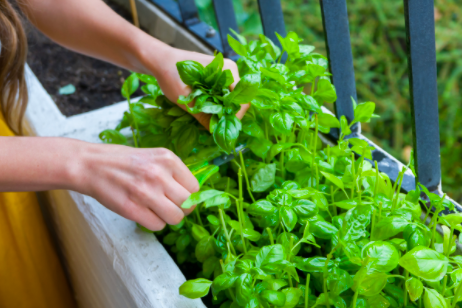There are many small changes you can make within your home to reduce your carbon footprint! Selecting eco-friendly options and making tiny adjustments to your regular routines can make a massive impact. You’ll be creating a more sustainable home and saving money in energy costs. It’s a win-win!
Bōde partners with builders who have projects focused on developing sustainable homes. We often have homes listed that are already upgraded with energy saving solutions. Browse homes for sale.

1. Swap regular bulbs for LED
Investing in energy efficient lights is an easy first step to making your home more eco-friendly. LED bulbs are very eco-friendly by using less energy. They last far longer than regular bulbs, and as an added bonus you will benefit from a lower energy bill.
2. Decorate with plants
Plants actually clean the air in your home. Plus they make your place look fresh and welcoming!
3. Upgrade your windows
Windows can be both a huge source of heat loss, and a direct entry for sunlight during the hotter months. Installing double-paned windows can keep help heat in during the winter and reduce the amount of energy needed to heat your home.
Consider installing quality blinds and curtains to block out heat in the summer months. It’s certainly a cheaper solution than running AC all day!
4. Use natural cleaning products
Using the right natural cleaning products can be just as effective as the ones with high amounts of chemicals. This easy swap can be cheaper, more environmental, and much better for your health. Research the easy swaps you can make and maybe you’ll even like the results from natural products better!
5. Buy a water filter
Drinking tap water is much more environmentally friendly than buying plastic, however, a lot of tap water either doesn’t taste as good or in some areas could even contain unsafe additives. Installing a water filter is a great way to actually enjoy your tap water, while also reducing plastic bottle use!
6. Use a smart thermostat
Smart thermostats provide an eco-friendly solution to controlling the temperature in your home. They are programmable (meaning you can lower the heat only during periods when no one is home), offer energy saving settings, and provide data that allows you to more easily monitor your energy consumption.
7. Separate your trash
Get different bins for recyclables, compost, and garbage and sort your trash accordingly. Compost can also be turned into a great natural fertilizer for your home garden!
8. Change up your laundry routine
According to data, up to 90% of energy used by a washing machine goes towards heating up water. Washing clothes in cold water can be an easy way to reduce the amount of energy you are using. Another positive – it’s also actually better for your clothes and helps to keep colours looking more vibrant!
When possible, you can also skip the dryer. Hang clothes to dry inside or out to reduce unnecessary energy used by the clothes dryer.
9. Install a low-flow toilet
Using a low-flush toilet can be a great way to significantly decrease your water use. Standard toilets use anywhere from 3.5 to 7 gallons of water per flush, while low-flush toilets use as little as 1.6 gallons per flush. This makes a positive environmental impact while also lowering your water bill!
10. Install sustainable flooring
Sustainable flooring is made from recycled materials and is an effective way to reduce the carbon footprint of your home. Material options include: bamboo, cork, carpet tiles, and natural linoleum. These sustainable floors are not only eco-friendly, they also improve the indoor air-quality in your home due to the lack of Volatile Organic Compounds.
Small changes can add up over time to make a large impact.




